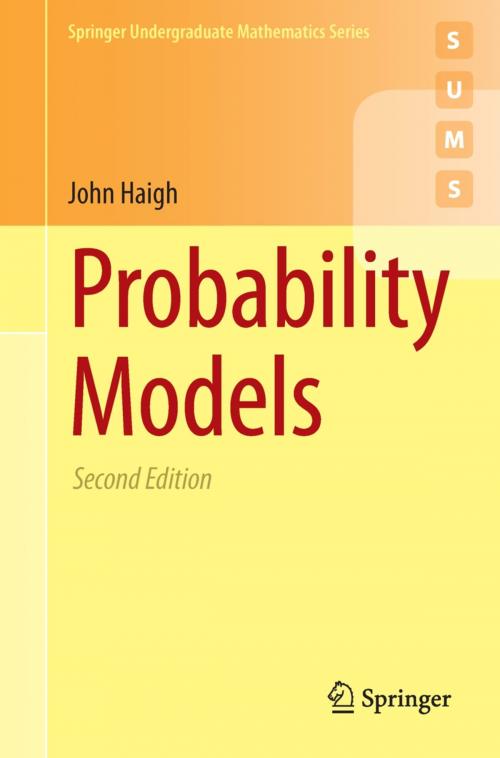| Author: | John Haigh | ISBN: | 9781447153436 |
| Publisher: | Springer London | Publication: | July 4, 2013 |
| Imprint: | Springer | Language: | English |
| Author: | John Haigh |
| ISBN: | 9781447153436 |
| Publisher: | Springer London |
| Publication: | July 4, 2013 |
| Imprint: | Springer |
| Language: | English |
The purpose of this book is to provide a sound introduction to the study of real-world phenomena that possess random variation. It describes how to set up and analyse models of real-life phenomena that involve elements of chance. Motivation comes from everyday experiences of probability, such as that of a dice or cards, the idea of fairness in games of chance, and the random ways in which, say, birthdays are shared or particular events arise.
Applications include branching processes, random walks, Markov chains, queues, renewal theory, and Brownian motion. This textbook contains many worked examples and several chapters have been updated and expanded for the second edition.
Some mathematical knowledge is assumed. The reader should have the ability to work with unions, intersections and complements of sets; a good facility with calculus, including integration, sequences and series; and appreciation of the logical development of an argument. Probability Models is designed to aid students studying probability as part of an undergraduate course on mathematics or mathematics and statistics.
The purpose of this book is to provide a sound introduction to the study of real-world phenomena that possess random variation. It describes how to set up and analyse models of real-life phenomena that involve elements of chance. Motivation comes from everyday experiences of probability, such as that of a dice or cards, the idea of fairness in games of chance, and the random ways in which, say, birthdays are shared or particular events arise.
Applications include branching processes, random walks, Markov chains, queues, renewal theory, and Brownian motion. This textbook contains many worked examples and several chapters have been updated and expanded for the second edition.
Some mathematical knowledge is assumed. The reader should have the ability to work with unions, intersections and complements of sets; a good facility with calculus, including integration, sequences and series; and appreciation of the logical development of an argument. Probability Models is designed to aid students studying probability as part of an undergraduate course on mathematics or mathematics and statistics.















